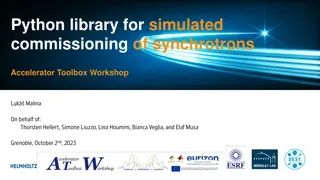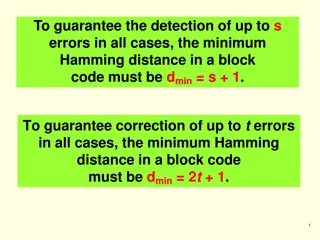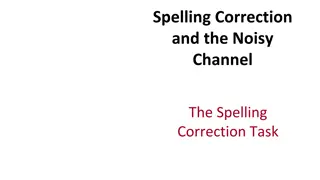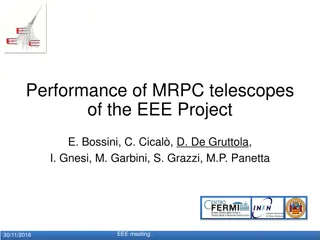Data Analysis and ADC Droop Correction Meeting Summary
The meeting on 2nd August 2013 discussed phase profiling with unfiltered and filtered mixer/diode, ADC droop correction using an IIR filter, and calibration techniques. Various plots and phase stability analyses were presented by Jack Roberts, highlighting the importance of accurate calibration for optimizing results. Additionally, the exponential fit of ADC droop data and its application in correcting droop effects were explored. The meeting emphasized the significance of precise measurements and techniques for achieving reliable results in data analysis.
Download Presentation

Please find below an Image/Link to download the presentation.
The content on the website is provided AS IS for your information and personal use only. It may not be sold, licensed, or shared on other websites without obtaining consent from the author.If you encounter any issues during the download, it is possible that the publisher has removed the file from their server.
You are allowed to download the files provided on this website for personal or commercial use, subject to the condition that they are used lawfully. All files are the property of their respective owners.
The content on the website is provided AS IS for your information and personal use only. It may not be sold, licensed, or shared on other websites without obtaining consent from the author.
E N D
Presentation Transcript
FONT Meeting 2nd August 2013 CTF3 May 2013 Data Analysis Phase Profile Plots and ADC Droop Correction with IIR Filter 02/08/2013 Jack Roberts 1
Overview Phase profile with unfiltered Mixer/Diode. Calibration with IIR filter, Mixer/sqrt(Diode). Phase profile with filtered, Mixer/sqrt(Diode). Unfiltered vs. Filtered phase reconstruction. Mean pulse to pulse phase stability. 02/08/2013 Jack Roberts 2
Recap: Unfiltered Mixer/Diode Calibration CALIBRATION LO SCAN Cancel ADC droop by using Mixer/Diode instead of Mixer/sqrt(Diode). Absorb beam current A in to calibration constant a. Mixer ?sin ? exp ?/? 9 4 3 8 Diode ?2exp ?/? 1 ?? Mixer Diode=1 Mixer Diode Best resolution near zero crossings of LO scan. Plots for the points circled here are outlined in red. All the plots are mean subtracted. sin ? = ? Fitted values for a: M1: 1.67 M2: 3.11 M3: 1.92 02/08/2013 Jack Roberts 3
Phase Profile No filtering, Mixer/Diode Calibration. 02/08/2013 Jack Roberts 4
Phase Profile No filtering, Mixer/Diode Calibration 02/08/2013 Jack Roberts 5
Phase Profile No filtering, Mixer/Diode Calibration Good agreement between M1 and M3 near zero crossings of ADC output in LO scan. Saturation effects near min/max of ADC output in LO scan due to sin(phi)>1 values. 02/08/2013 Jack Roberts 6
ADC Droop Exponential Fit Fit an exponential to the diode data then use the fitted decay constants in an IIR filter: Diode = ?2exp ?/? Fitted values for (in 357 MHz samples), Diode ADCs: - M1: 518 1 - M2: 440 1 - M3: 457 2 Also have droop in mixer channel but can t fit exponential to it. - Use the mean of the diode ADCs: = 472. - Can get these values from lab tests (on going). Fitted values for can vary up to ~20% dependent on sampling window used, LO phase etc. Resolution seems fairly insensitive to . 02/08/2013 Jack Roberts 7
ADC Droop Exponential Fit Left: Points are mean diode channel data for each LO phase setting. Black lines are the exponential fit using the fitted decay constants. Seeing cross-talk from Mixer? 02/08/2013 Jack Roberts 8
IIR Filter Implement an IIR filter to remove the exponential droop using the fitted decay constants: = ) ( x k y k + ( ) k x 1 Can now perform a calibration using Mixer/sqrt(Diode) as planned: sin ? =1 Mixer Diode ?2 Mixer ?sin ? ? Diode Fitted values for a: M1: 52.5 M2: 84.1 M3: 56.9 02/08/2013 Jack Roberts 9
Phase Profile Filtered, Mixer/sqrt(Diode) Calibration 02/08/2013 Jack Roberts 10
Phase Profile Filtered, Mixer/sqrt(Diode) Calibration 02/08/2013 Jack Roberts 11
Phase Profile Filtered, Mixer/sqrt(Diode) Calibration At a first glance, very similar to the unfiltered calibration plots. 02/08/2013 Jack Roberts 12
Resolution Comparison Filtered vs. Unfiltered Resolution appears to be a bit better for the filtered calibration. 02/08/2013 Jack Roberts 13
Comparison Unfiltered vs. Filtered M1 02/08/2013 Jack Roberts 14
Comparison Unfiltered vs. Filtered M1 02/08/2013 Jack Roberts 15
Comparison Unfiltered vs. Filtered M1 02/08/2013 Jack Roberts 16
Comparison Unfiltered vs. Filtered M2 02/08/2013 Jack Roberts 17
Comparison Unfiltered vs. Filtered M2 02/08/2013 Jack Roberts 18
Comparison Unfiltered vs. Filtered M2 02/08/2013 Jack Roberts 19
Comparison Unfiltered vs. Filtered M3 02/08/2013 Jack Roberts 20
Comparison Unfiltered vs. Filtered M3 02/08/2013 Jack Roberts 21
Comparison Unfiltered vs. Filtered M3 There are differences in the relative scale of the reconstructed phase from the two calibrations. 02/08/2013 Jack Roberts 22
Filtered vs. Unfiltered Calibration Constant Mean Mean Filtered/unfiltered calibration constants divided by mean to make them comparable. Only mean value used in phase reconstruction. Differences vs. sample no. will cause phase shifts. Mean 02/08/2013 Jack Roberts 23
Mean Pulse Phase Stability 02/08/2013 Jack Roberts 24
Mean Pulse Phase Stability 02/08/2013 Jack Roberts 25
Mean Pulse Phase Stability Only short runs, but around 0.5o 1.0o of jitter in the mean pulse phase. 02/08/2013 Jack Roberts 26
Summary The IIR filter appears to do a good job but lab tests needed to accurately determine decay constants. Difference in relative scale of reconstructed phase for unfiltered Mixer/Diode and filtered Mixer/sqrt(Diode) calibrations. Can look in to cross-talk between the mixer and diode. Side notes: Installation of kickers, rearrangement of magnets etc. in TL2 for the feedforward system in progress. M2 can t be repaired due to radiation. Planned to test using horizontal pickups instead of vertical. 4th monitor will be built. May be delays in installing M3 in its final location. Thinking about how to integrate FONT DAQ with CTF3 data. 02/08/2013 Jack Roberts 27























